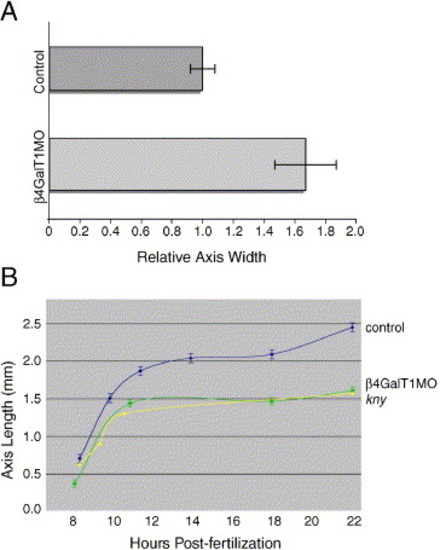Fig. 6
- ID
- ZDB-FIG-071001-13
- Publication
- Machingo et al., 2006 - A beta1,4-galactosyltransferase is required for convergent extension movements in zebrafish
- Other Figures
- All Figure Page
- Back to All Figure Page
|
Quantification of abnormal anterior–posterior axis morphology in β4GalT1MO embryos. (A) The width of the dorsal axis was determined at 85% epiboly for both control and β4GalT1MO embryos. The axial width in control embryos was set to 1. The axial width in β4GalT1MO embryos is increased by 63%. Error bars = ±SEM. (B) The rate of anterior–posterior axis elongation was determined for both control and β4GalT1MO embryos. Control embryos (—) undergo a sharp elongation between 8 and 12 h post-fertilization that is also seen in β4GalT1MO embryos (∗); however, the β4GalT1MO embryos are slightly shorter. Following 14 h of development, control embryos undergo a second elongation event, which is absent in β4GalT1MO embryos. These results mimic those reported for classic convergent extension mutations, such as kny (▲) (adapted from Topczewski et al., 2001). |
Reprinted from Developmental Biology, 297(2), Machingo, Q.J., Fritz, A., and Shur, B.D., A beta1,4-galactosyltransferase is required for convergent extension movements in zebrafish, 471-482, Copyright (2006) with permission from Elsevier. Full text @ Dev. Biol.

